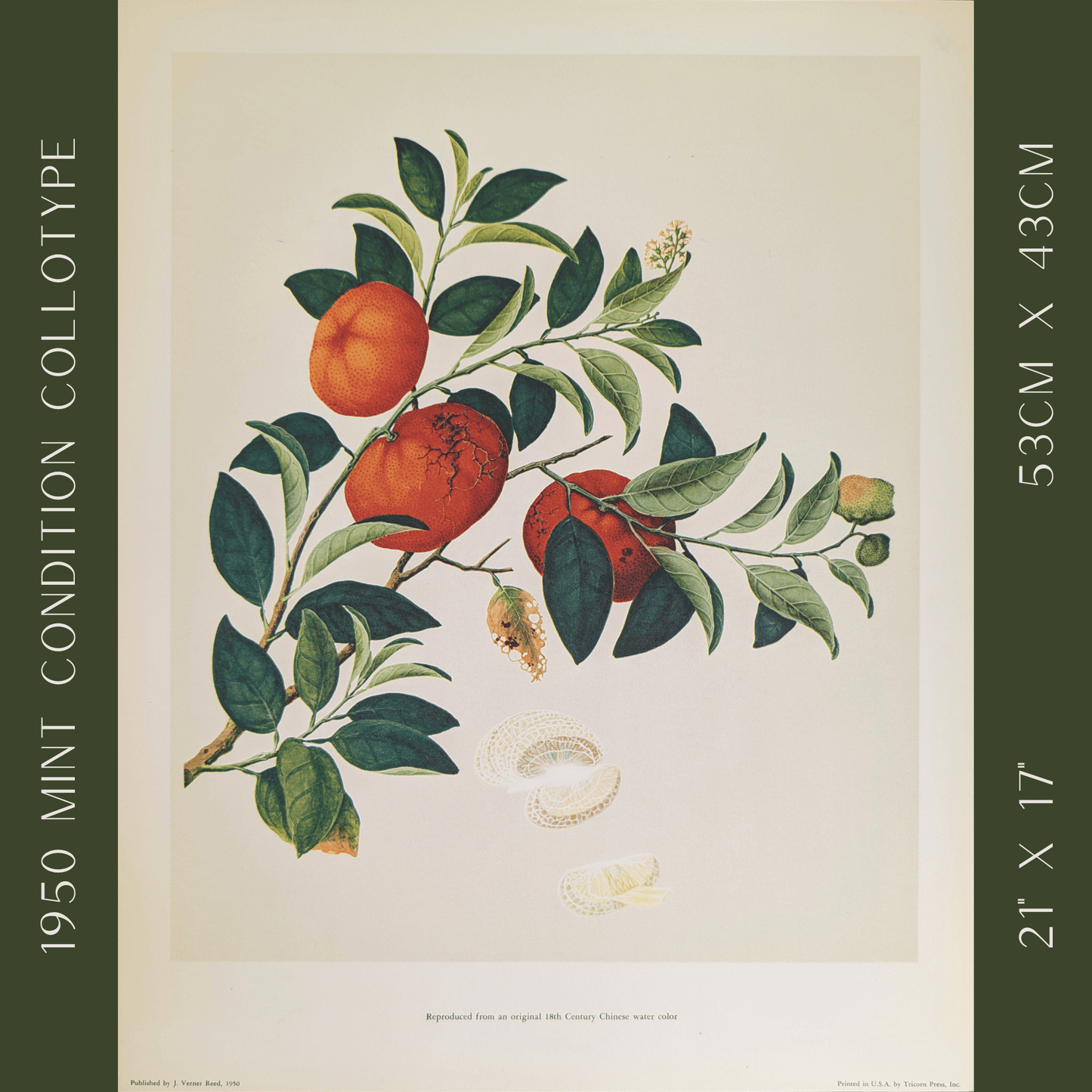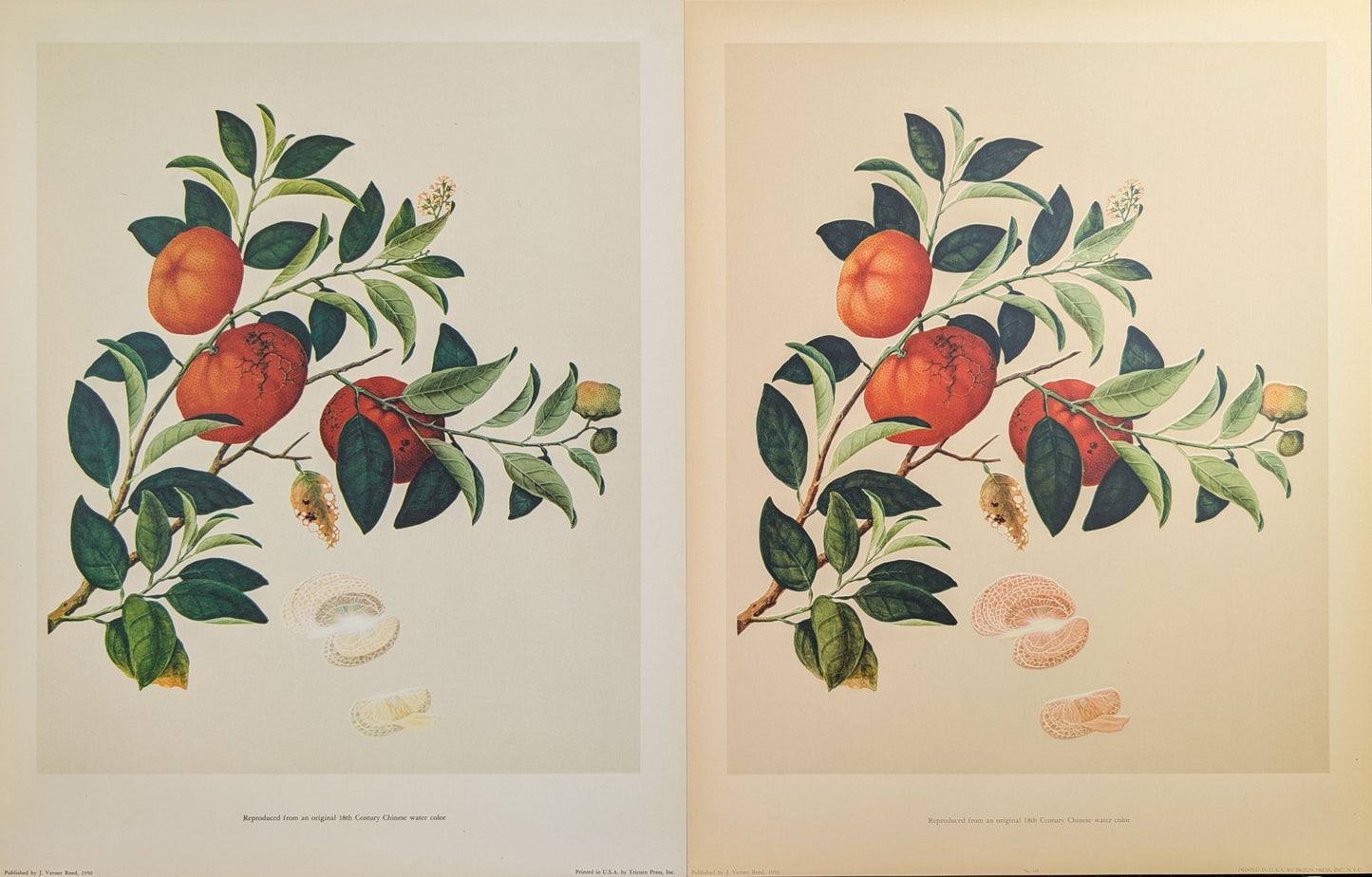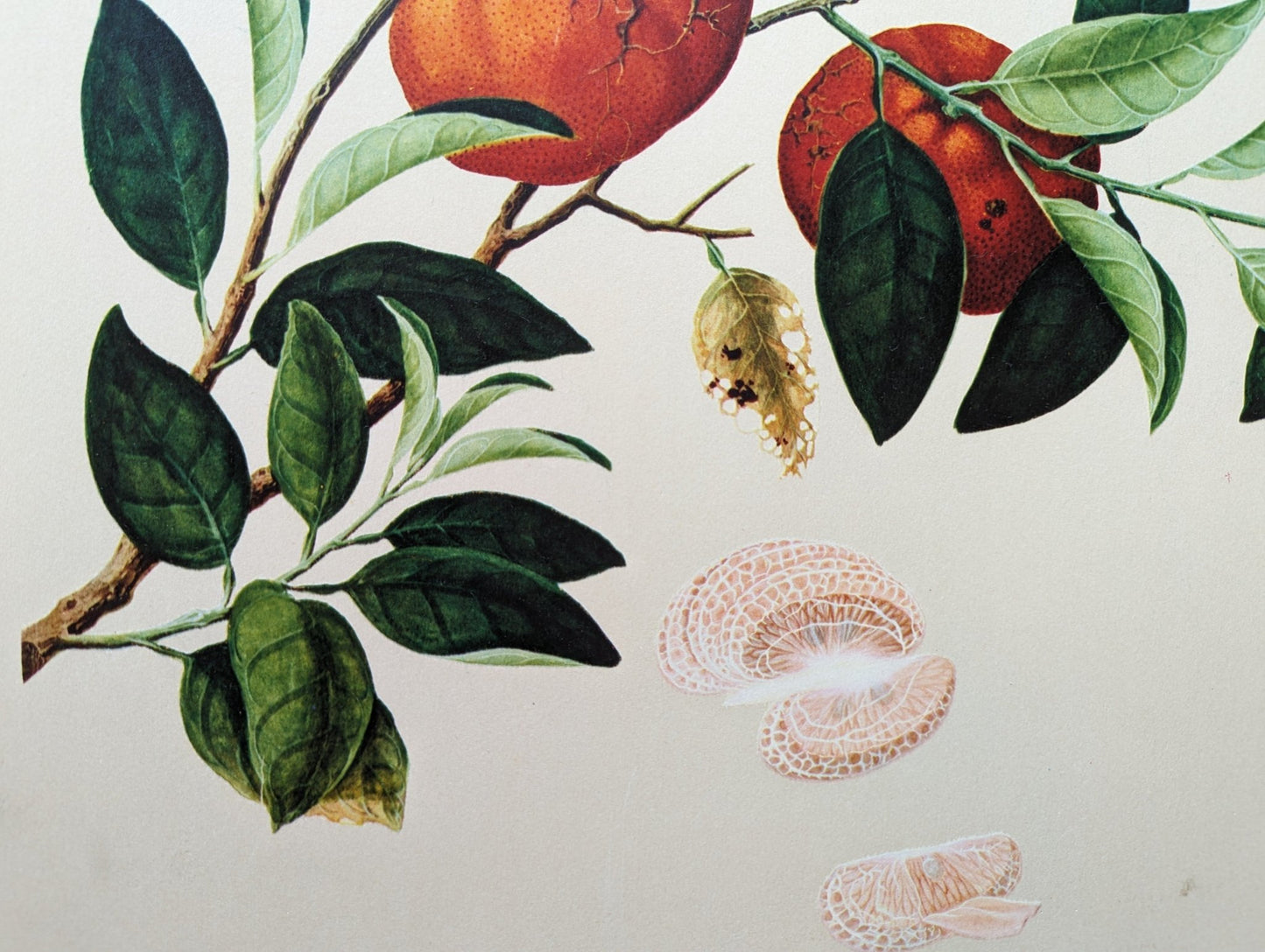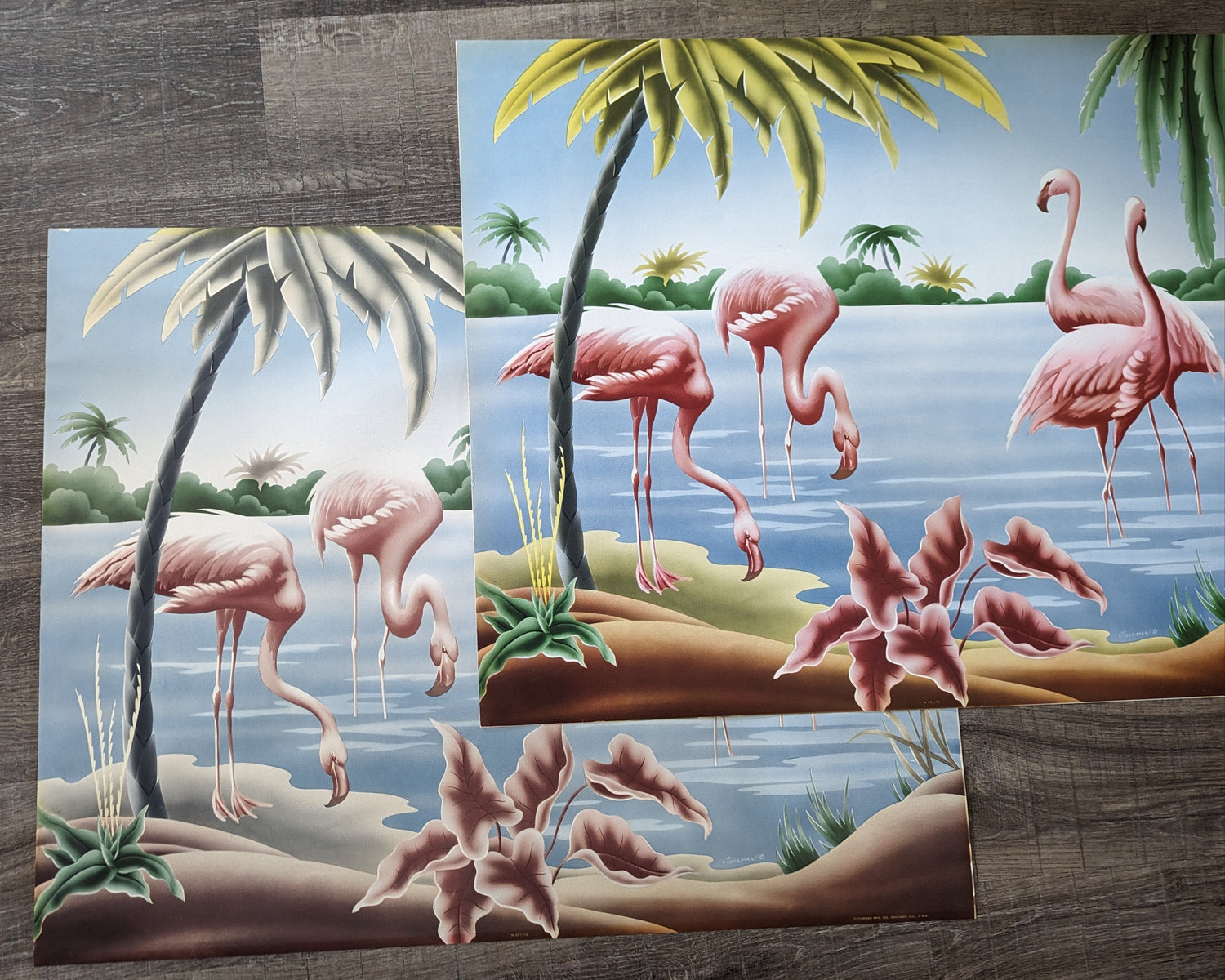Catalda Fine Arts
Tangerine | 1950 Vintage Chinese Botanical Collotype | Citrus Wall Art
Tangerine | 1950 Vintage Chinese Botanical Collotype | Citrus Wall Art
Couldn't load pickup availability
Share
Tangerine | Mid-Century Botanical Still Life
Tangerine, reproduced in 1950 from an 18th-century Chinese watercolor, depicts a branch heavy with fruit, blossoms, and a sliced citrus segment. Its vivid color palette and graceful arrangement embody the delicacy and balance of traditional Chinese botanical painting while appealing to mid-century decorative sensibilities.
Published by J. Verner Reed and printed in New York by both Tricorn Press and Triton Press, this mid-sized collotype exists in authentic editions from each printer. Subtle differences in paper tone and ink density can be seen between versions, a hallmark of the printing process rather than later reproduction.
Preserved flat in our family archive for decades—never framed or displayed—this is true “new vintage” in mint condition. Fewer than 50 prints remain from this final archived stock. If you prefer one printer edition (Tricorn or Triton), please indicate your choice in the order comments at checkout and we will accommodate whenever possible.
Details
Size: 21 × 17 inches
Medium: Collotype on paper
Date: 1950 printing
Publisher: J. Verner Reed
Printers: Tricorn Press and Triton Press, New York
Condition: Mint / uncirculated
Includes: Lithograph care sheet
Pair With
- Orange – Complements Tangerine with citrus tones for a vibrant, cohesive display.
- Gourd – Earthy greens balance the bright citrus hues.
- Lotus – Introduces a soft floral contrast against the warm oranges.
Group Tangerine with other mid-sized collotypes for a striking botanical wall gallery that highlights both color and cultural history.

Learn more about the artistry and history behind these prints in our blog features:
The Collotype Process at Triton Press, N.Y.C.
Vintage vs. New Vintage: What’s the Difference?
Artist: Unknown
Dimensions:
17.0 in × 21.0 in
(43.0 × 53.0 cm)
Manufacturer: Triton and Tricorn Presses
Production Date: 1950
Condition: Mint
More information
More information
Just like the majority of our inventory at Pink Flamingos, this listing is vintage and has never been displayed or used. It's from limited, unopened stock sourced directly from the original manufacturer or distributer. As a result, its colors are more vibrant than those typically found in similarly aged prints, leading us to classify it as "new." Curious about new vintage? Read all about it in my blog: https://www.pinkflamingos.shop/blogs/news/vintage-vs-new-vintage-whats-the-difference
Please note that this listing is for an unframed authentic, genuine old print published in the early-to-mid 20th century using quality paper and inks. It reflects the colors and styles popular in decorative accessories of that era. The patina resulting from any minor discoloration or fading is indicative of its age and contributes to its uniqueness. In order to ensure your purchase lasts a lifetime, please follow this link for care tips.









What is "New Vintage"?
"New vintage" refers to original, vintage artwork from the early 20th century that has never been purchased, used, or displayed by a consumer. At Pink Flamingos, we offer a remarkable collection of these pristine prints, sourced directly from manufacturers. Unlike other vintage artwork that may have faded or aged over time, our "new vintage" prints retain their vibrant colors and impeccable condition. With their untouched allure, these artworks carry a unique historical value and provide collectors with an opportunity to own a piece of art history that is both rare and exceptionally well-preserved.
Read all about it in my blog: https://www.pinkflamingos.shop/blogs/news/vintage-vs-new-vintage-whats-the-difference









